From Morrocco to Sydney
I will never forget my trip to Marrakech. It was like nothing I’d experienced before and was a total assault on my senses. The winding alley ways with busy intersections, souks (market stalls) selling things I could only imagine - a BBQ’ed sheep’s head on a stick is forever ingrained in my mind. Carts containing rows upon rows of little colourful spice mountains, beautifully crafted tea sets and pottery – each piece uniquely ornate and bursting with colours and patterns. The call to prayer in Arabic from the rooftops was perhaps the most mesmerising sound I’d ever heard. We went up to the rooftop garden of our riad every evening to fully experience this as the sun set over the city. It seemed to go hand in hand with all the smoking grills we could see rising up from the main square, cooking a variety of meats on sticks to sample and beautiful clay tagine dishes cooking over fire.
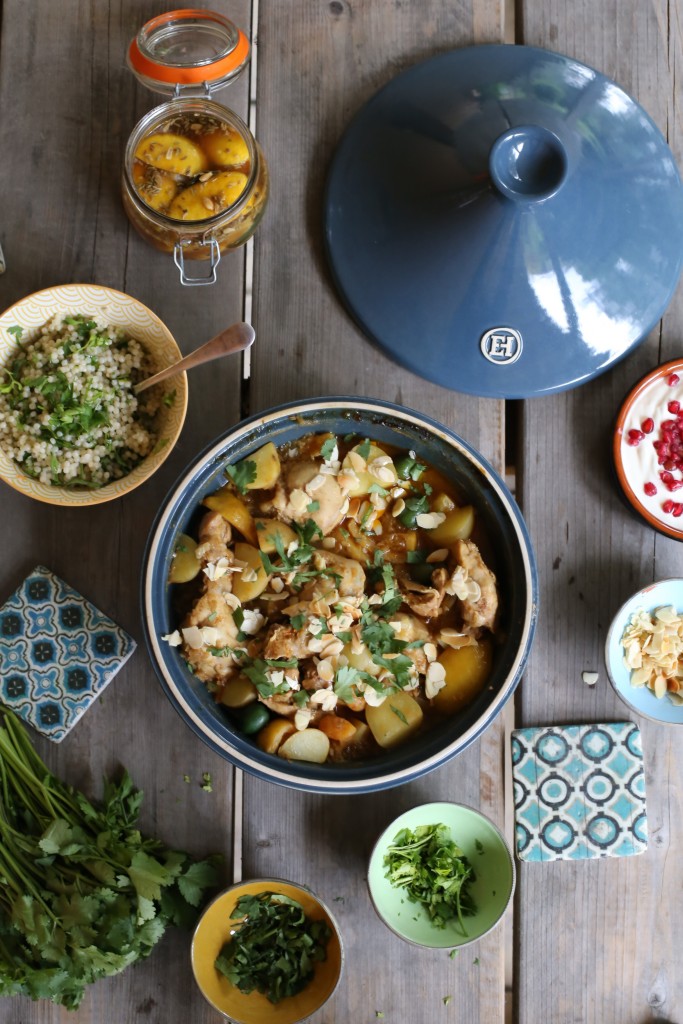
The Emile Henry Tagine
My wonderful memories of Morocco made me jump at the chance to try cooking with the Emile Henry tagine. The tagine is available in red, charcoal black and blue. I chose the blue, as it reminded me of some of the vibrant colours I’d seen in Marrakech.
It’s an incredibly hardwearing piece of kitchenware. The tagine can go straight from freezer to oven, straight under the grill and even in the microwave. All the Emile Henry products are dishwasher-proof. The glaze is so strong and resistant to damage that the surface is scratch-resistant – even from direct contact with a knife.
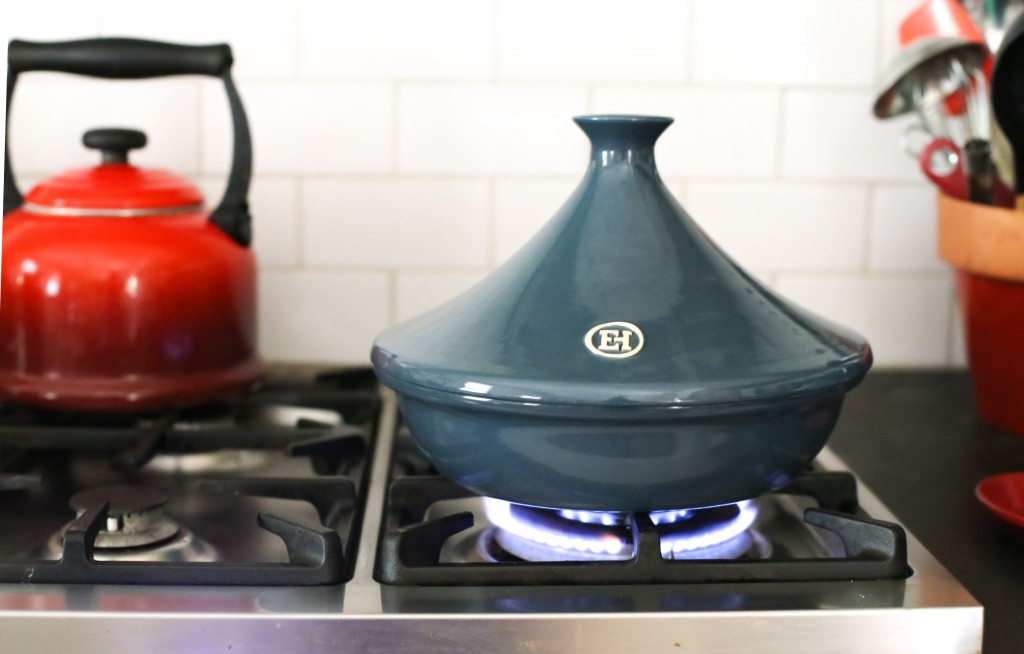
The Emile Henry clay products are 30% lighter than cast iron and retain heat longer. Food is cooked more gently and evenly in the tagine due to the clay having superior heat retention properties – it’s been extracted and produced in the Burgundy region of France since 1850. These properties diffuse the heat, which in turn reduces chances of food burning. After learning all of this I wonder why aren’t we all using more clay products in our cooking?
How to cook with a tagine
- A tagine’s unique lid shape allows steam to rise and circulate around the food evenly. So the lid should be kept on during cooking.
- Tagines work best using low heat and longer cooking times. They are perfect for cooking stews and braised dishes with liquid. In fact, liquid should always be used during cooking. The capacity of the Emile Henry tagine is 2 liter.
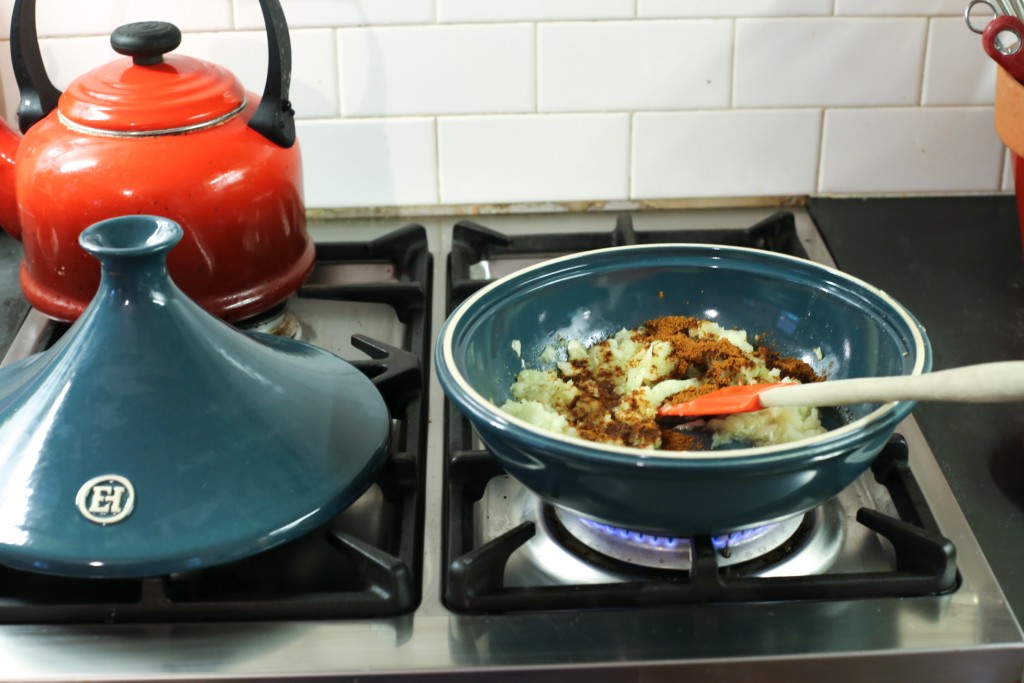
- This tagine can be used over a direct heat on the stove top, or in the oven. Keep the temperature fairly low: around 180C oven and up to medium heat on the stovetop. Do not worry about over-cooking: you can exceed the cooking time in recipes without any problems.
- Tagine cooking is all about simplicity. Everything goes in to cook together. You can layer your ingredients according to the time required to cook. The food in the bottom of the tagine will braise in the liquid. More delicate foods that may fall apart can be stacked up in the middle to cook more gently in the steam.
- Leftovers can be stored right in the tagine inside the fridge (or freezer) and reheated in the microwave.
Chicken and Preserved Lemon Tagine
(serves 4 – 6)
Preserved lemons have a unique flavour that isn’t as sour or bitter as you’d expect! They perfume the sauce in this tagine dish perfectly. They are very easy to make and keep for up to two years. They make beautiful homemade Christmas gifts for foodie friends.
This tagine dish has a gorgeous sweet and sour flavour from the lemons and some chopped apricots.
To make the preserved lemons (one week before use in the tagine):
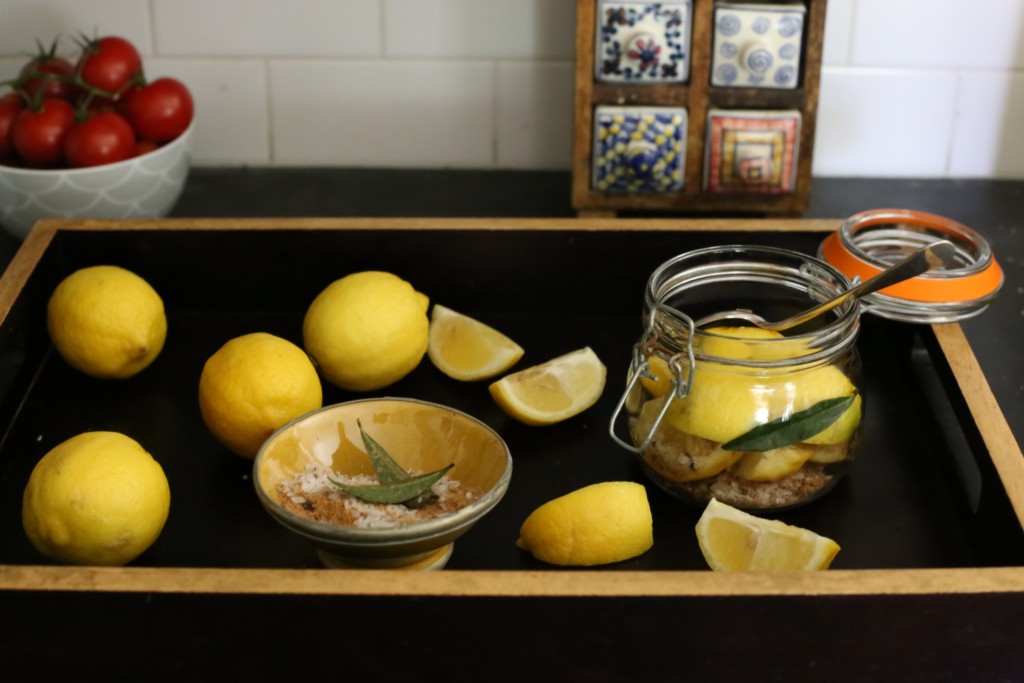
In a small bowl, mix together 4 Tbsp sea salt flakes, 1 Tbsp sugar, 1 tsp coriander seed, 1tsp fennel seed and 1tsp cardamom seeds.
Wash a 1L glass jar with hot water and dry with a clean tea towel. Scrub 4-6 lemons in hot water also, then cut into quarters.
Layer the lemon slices with the salt mix inside the jar. After each layer of lemons, press down hard with a spoon so that most of the juice is released and rises up over the top. The juice must cover the lemons.
Place the lid on and store in a dark place. Your lemons will be ready to eat in 1 week.
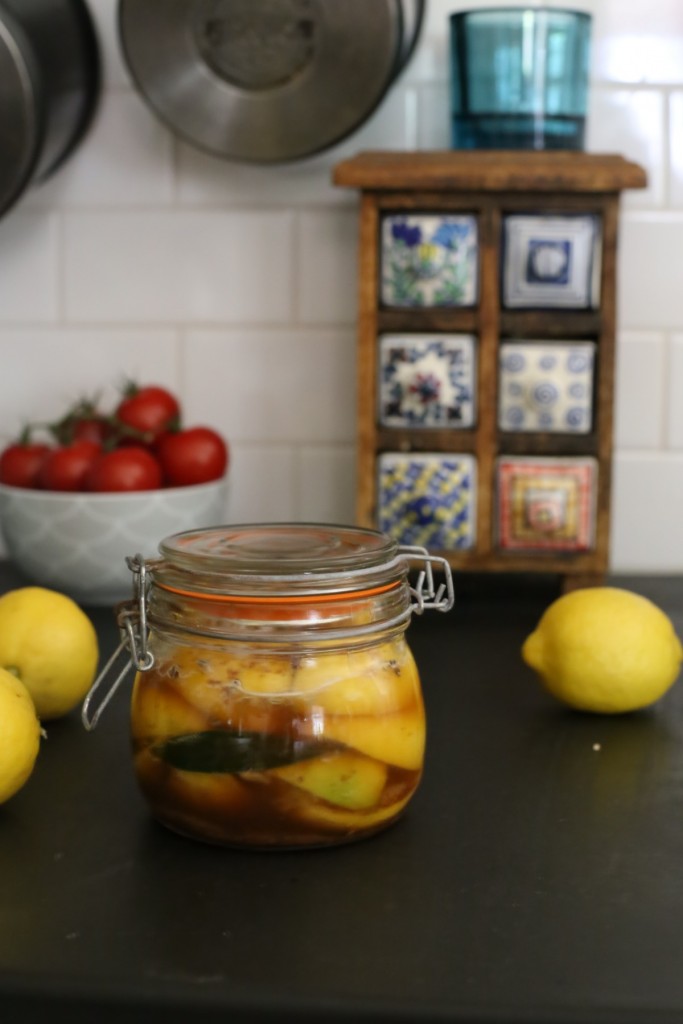
To make the tagine:
INGREDIENTS
- 2 tbsp olive oil
- 2 tbsp almond flakes
- 1 kg boneless chicken thighs
- 1 large brown onion, sliced
- 1 pinch saffron threads
- 2 heaped tsp Ras El Hanout*
- 1 cup chicken stock
- 6-8 new potatoes, halved or quartered
- 4-6 preserved lemon wedges, cut into smaller pieces
- 1/3 cup whole green olives
- 1/3 cup dried apricots, chopped
- chopped coriander, to serve
INSTRUCTIONS
- Marinate the chicken thighs in 1 tsp Ras El Hanout, ¼ tsp salt, 1 tbsp. of olive oil and juice of half a lemon. Leave to marinate for 30 minutes – overnight.
- Turn on the oven grill. Toss the almonds with a little olive oil inside the tagine base and place (without lid) under the grill. Watch carefully until the almonds are lightly toasted, 2-3 minutes. Set the almonds aside for later.
- Place the tagine onto the stove top and on medium heat and brown the onion in the rest of the oil. Add the garlic and sauté for a minute further. Add the remaining tsp of Ras El Hanout and stir to coat.
- Add the stock, saffron, chicken thighs, lemon pieces, olives and apricots around the dish. In the middle of the dish, pile up the potatoes and cover with the lid.
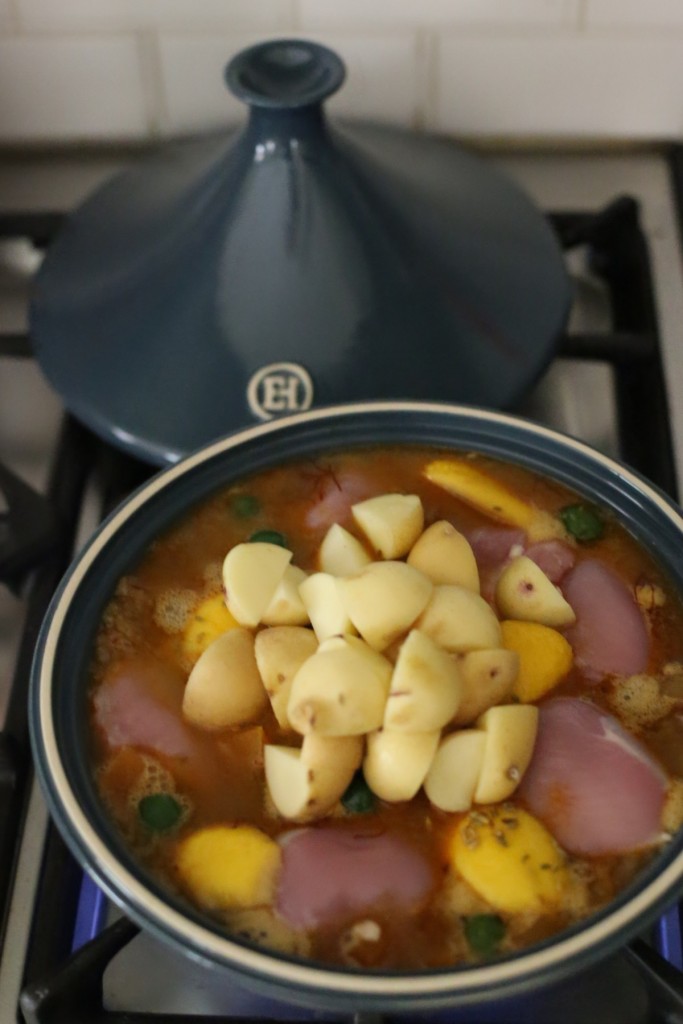
- Heat the oven to 180C. Place the tagine in the oven and cook for 60-70 mins. Alternatively, continue to cook on a very low heat on the hob for around 45 minutes. Check halfway through for liquid and turn the chicken pieces over carefully. Add a little water or stock if more is required.
- To serve, stir everything gently together, top with the toasted almonds and some chopped coriander.
This goes well with cous cous, rice or a grain such as bulghar wheat or quinoa, mixed with chopped herbs.
NOTES
- No extra salt is needed in the sauce due to the preserved lemons and olives.
- Ras El Hanout is a common spice mixture which is to Moroccan cuisine like Garam Masala is to Indian cuisine. It is found in large grocery stores or spice merchants. Don’t worry if you don’t have it though. You can make an alternative: ¼ tsp ground cumin, ¼ tsp ground coriander, ¼ tsp ground ginger, ¼ tsp turmeric, ½ tsp cinnamon and ¼ tsp paprika.
About the Author:
Becky Gilhespie is a food writer and former Masterchef semi-finalist. Her blog,
www.eatwhatweeat.com provides inspiration for meals that both kids and adults love. They are elegant yet simple, easy to follow recipes that are fast to get on the table and use every day ingredients.
Becky is originally from the US but lived in London for 15 years and now resides in Sydney with her husband and two little boys. Her food is inspired a lot by her travels (and desire to travel more).

 The Emile Henry clay products are 30% lighter than cast iron and retain heat longer. Food is cooked more gently and evenly in the tagine due to the clay having superior heat retention properties – it’s been extracted and produced in the Burgundy region of France since 1850. These properties diffuse the heat, which in turn reduces chances of food burning. After learning all of this I wonder why aren’t we all using more clay products in our cooking?
The Emile Henry clay products are 30% lighter than cast iron and retain heat longer. Food is cooked more gently and evenly in the tagine due to the clay having superior heat retention properties – it’s been extracted and produced in the Burgundy region of France since 1850. These properties diffuse the heat, which in turn reduces chances of food burning. After learning all of this I wonder why aren’t we all using more clay products in our cooking?

 In a small bowl, mix together 4 Tbsp sea salt flakes, 1 Tbsp sugar, 1 tsp coriander seed, 1tsp fennel seed and 1tsp cardamom seeds.
Wash a 1L glass jar with hot water and dry with a clean tea towel. Scrub 4-6 lemons in hot water also, then cut into quarters.
Layer the lemon slices with the salt mix inside the jar. After each layer of lemons, press down hard with a spoon so that most of the juice is released and rises up over the top. The juice must cover the lemons.
Place the lid on and store in a dark place. Your lemons will be ready to eat in 1 week.
In a small bowl, mix together 4 Tbsp sea salt flakes, 1 Tbsp sugar, 1 tsp coriander seed, 1tsp fennel seed and 1tsp cardamom seeds.
Wash a 1L glass jar with hot water and dry with a clean tea towel. Scrub 4-6 lemons in hot water also, then cut into quarters.
Layer the lemon slices with the salt mix inside the jar. After each layer of lemons, press down hard with a spoon so that most of the juice is released and rises up over the top. The juice must cover the lemons.
Place the lid on and store in a dark place. Your lemons will be ready to eat in 1 week.


